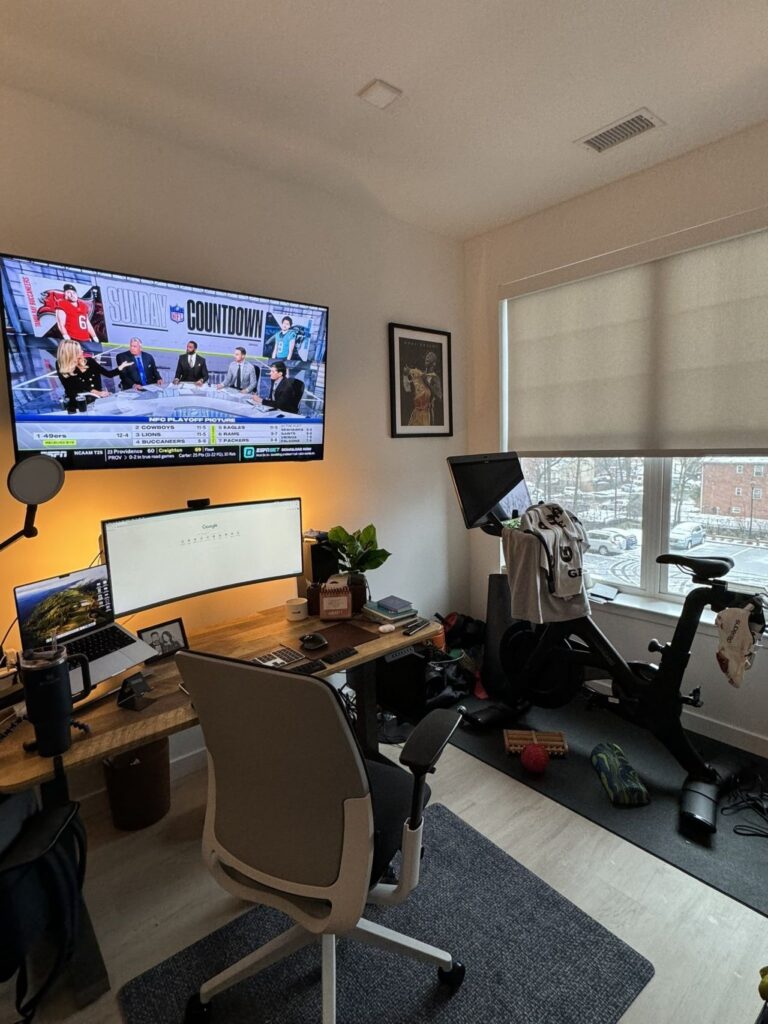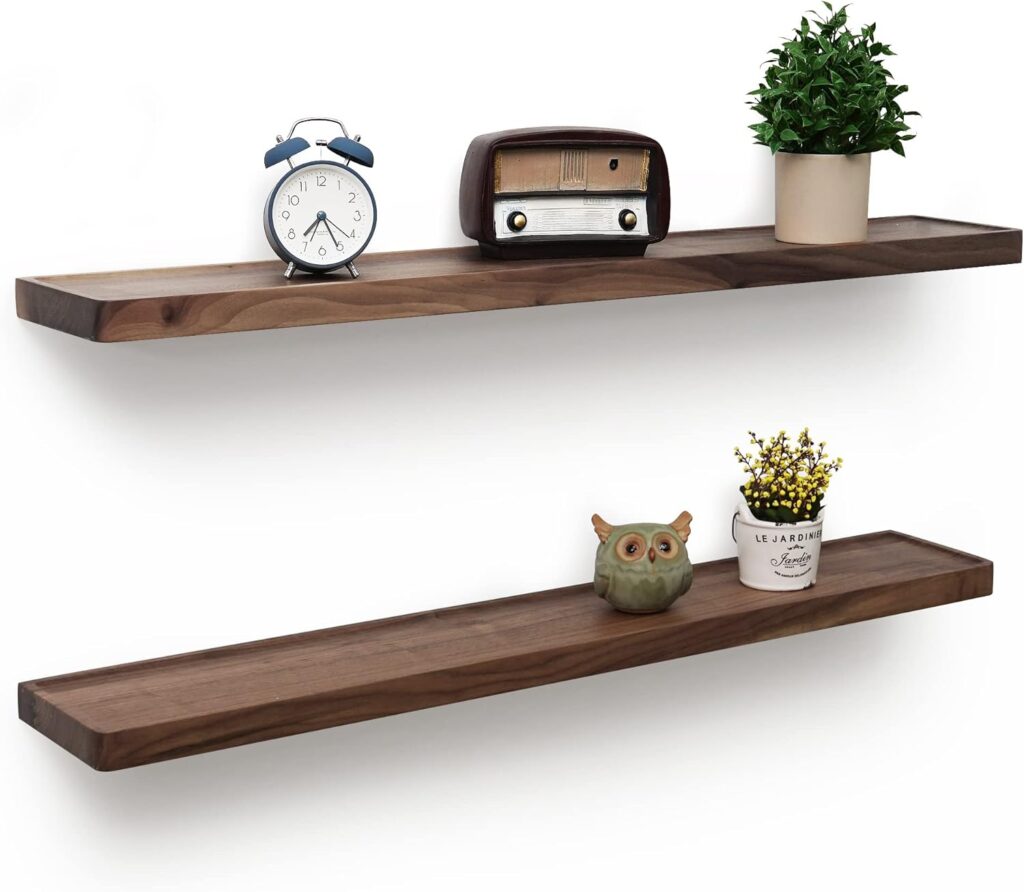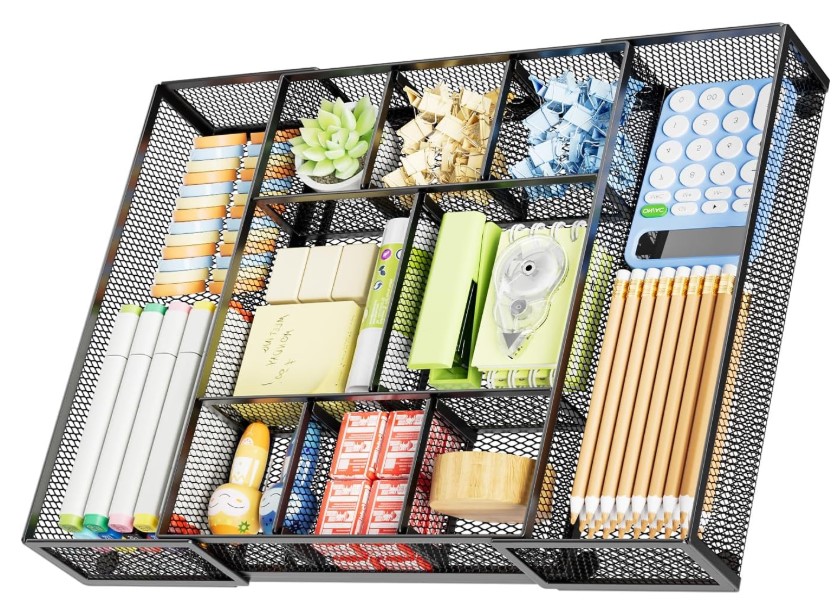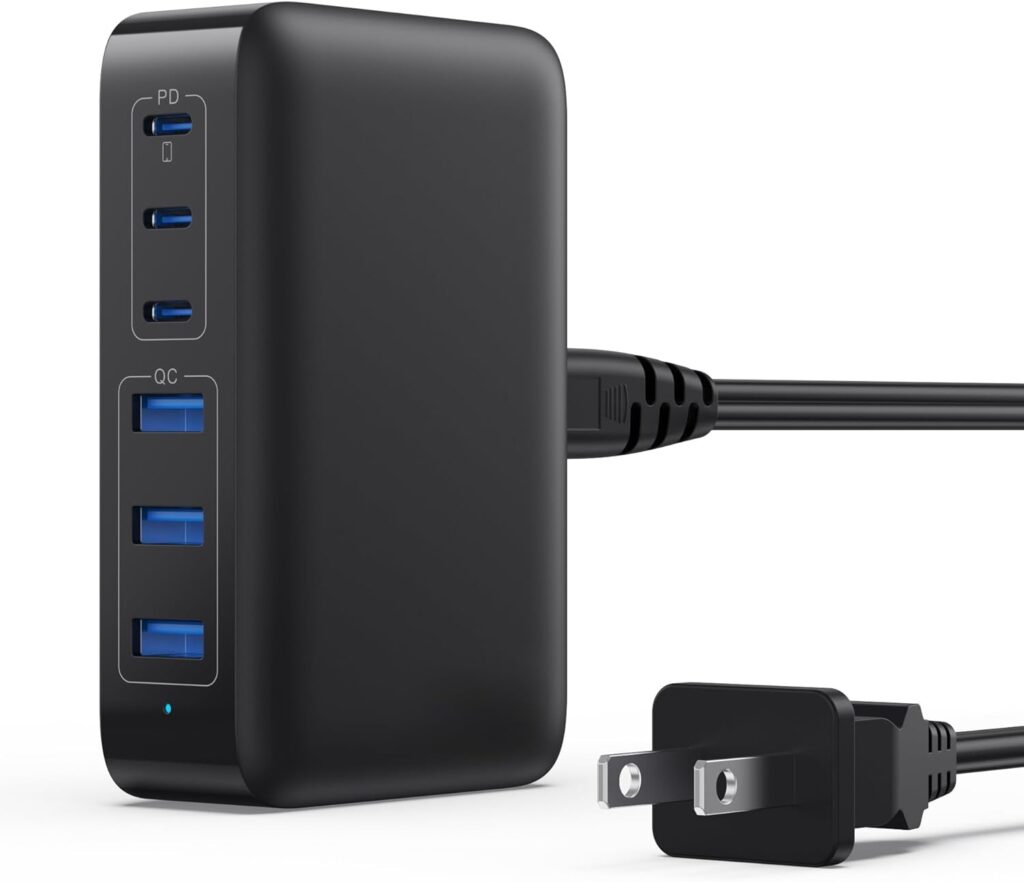Efficient and Personalized Workspace
After a decade of working from home, I’ve learned that creating the ideal home office setup is both an art and a science. It’s about crafting a space that boosts productivity, protects health, and sparks joy.
My journey began with a rickety card table in the corner of my living room, but now I’ve fine-tuned my workspace into a productivity powerhouse.
Let me share what I’ve learned about making a home office truly work.
*This site may contain affiliate links, meaning we earn a small commission if you purchase through these links at no additional cost to you. We only recommend products and services we trust.*
The Foundation: Ergonomics is Everything
The backbone of any great home office is ergonomics. It’s the difference between ending your workday feeling energized or feeling like you’ve been hit by a truck.
The Perfect Chair
The centerpiece of your ergonomic setup is your chair. Invest in a good one.
Look for adjustable height, lumbar support, and armrests.
Your future self will thank you when you’re not dealing with chronic back pain.
When shopping for a chair, consider these factors:
- Adjustability: Look for chairs with many adjustment points, including seat height, backrest angle, and armrest height.
- Lumbar support: Ensure the chair provides adequate lower back support to maintain the natural curve of your spine.
- Seat depth: The seat should be deep enough to support your thighs without putting pressure on the back of your knees.
- Material: Choose breathable fabrics for comfort during long work sessions.
- Wheels: Opt for chairs with smooth-rolling casters for easy movement.
- Recommended Product: Ergonomic Office Chair
The Ideal Desk
Your desk height is crucial. The ideal height is when your elbows are at a 90-degree angle while typing.
If you’re feeling fancy (or if you’re like me and can’t sit still for more than an hour), consider a sit-stand desk.
I switched to a sit-stand desk last year, and it’s been a game-changer for my energy levels. Here’s why:
- Increased movement: Alternating between sitting and standing keeps your body active throughout the day.
- Improved posture: Standing encourages better spinal alignment.
- Enhanced focus: Changing positions can help maintain alertness during long work sessions.
- Customizable height: Easily adjust the desk to your perfect ergonomic position, whether sitting or standing.
When selecting a sit-stand desk, consider factors like weight capacity, adjustment speed, and noise level during height changes.
Recommended Product: ErGear Height Adjustable Electric Standing Desk
Monitor Position
Don’t forget about your watch position. The top of your screen should be at or slightly below eye level.
If you’re using a laptop, invest in a separate keyboard and mouse, and prop that laptop up on a stand.
Your neck will appreciate it.
For optimal watch setup:
- Distance: Position your watch about an arm’s length away from your eyes.
- Height: Align the top of the screen with your eye level to prevent neck strain.
- Angle: Tilt the watch slightly upward (about 10-20 degrees) to reduce glare and improve viewing angle.
- Multiple watches: If using dual screens, position them side by side with minimal gap and angle them slightly inward.
- Recommended Product: Laptop Stand Adjustable
Let There Be Light (But Not Too Much)
Lighting is the underappreciated star of the home office. Poor lighting can lead to eye strain, headaches, and even mess with your sleep cycle.
Harnessing Natural Light
Natural light is king, so if possible, set up your workspace near a window. But be mindful of glare on your screen – you might need to adjust your setup throughout the day.
Here are some tips for maximizing natural light:
- Position your desk perpendicular to the window to reduce glare.
- Use sheer curtains or blinds to diffuse harsh sunlight.
- Consider anti-glare screens or filters for your watches.
- Regularly clean your windows to maximize light transmission.
- Recommended Product: LED Desk Lamp for Home Office
Artificial Lighting Solutions
For those late-night work sessions (we’ve all been there), invest in a good task light. Look for one with adjustable brightness and color temperature.
I personally love lights that mimic natural daylight – they keep me alert without feeling harsh.
When selecting artificial lighting:
- Choose LED bulbs with a color temperature between 5000K and 6500K for daylight simulation.
- Opt for lamps with adjustable arms to direct light where needed.
- Consider bias lighting behind your watch to reduce eye strain.
- Use dimmer switches to adjust light levels throughout the day.
- Recommended Product: LED Corn Light Bulb 150W Equivalent 2000 Lumen 6500K Cool Daylight White
The Green Revolution: Plants in the Workspace
Now, let’s talk about something that might seem a bit out there at first: plants. I was skeptical too, but after adding a few green friends to my office, I’m a convert.
Studies have shown that plants can increase productivity by up to 15% and reduce stress. Plus, they help purify the air, which is crucial in a space where you spend 8+ hours a day.
If you’re not blessed with a green thumb (guilty as charged), start with low-maintenance options like snake plants or pothos. They’re practically indestructible and still provide all the benefits.
Here are some top office-friendly plants:
- Snake Plant (Sansevieria): Thrives in low light and needs minimal watering.
- Pothos (Epipremnum aureum): A fast-growing vine that can tolerate a variety of light conditions.
- ZZ Plant (Zamioculcas zamiifolia): Drought-tolerant and can survive in low light.
- Spider Plant (Chlorophytum comosum): Easy to propagate and great for air purification.
- Peace Lily (Spathiphyllum): Thrives in low light and helps remove indoor air pollutants.
To maximize the benefits of office plants:
- Place them at eye level or in your peripheral vision to enjoy their stress-reducing effects.
- Use plants of varying heights to create visual interest.
- Consider hanging plants or wall-mounted planters to save desk space.
- Rotate plants regularly to confirm even growth and prevent dust accumulation.
Tech Essentials for the Modern Home Office
A reliable, high-speed internet connection forms the foundation of a productive home office. Nothing kills productivity faster than a spotty connection during an important video call.
Video Conferencing Setup
Speaking of video calls, invest in a decent webcam and microphone. Your colleagues will appreciate not having to squint at a grainy image or strain to hear you through static.
For a professional video conferencing setup:
- Webcam: Look for 1080p resolution or higher with auto-focus capabilities.
- Microphone: Consider a USB condenser microphone for clear audio.
- Lighting: Use a ring light or strategically placed desk lamps to illuminate your face evenly.
- Background: Create a professional-looking backdrop or use a virtual background if necessary.
- Recommended Product: GUSGU G910 2K Quad HD Webcam for PC
Dual Monitor Setup
Consider a dual watch setup if your work involves a lot of multitasking. It’s a game-changer for productivity.
Here’s how to make the most of many screens:
- Match resolutions: Ensure both watches have the same resolution for a seamless experience.
- Align properly: Position watches at the same height and angle for comfortable viewing.
- Use watch arms: Free up desk space and improve ergonomics with adjustable watch arms.
- Customize display settings: Adjust scaling and orientation to suit your workflow.
- Recommended Product: JSAUX FlipGo Lite 15.6″ IPS Foldable Dual Stacked Portable Monitor
Cable Management
Don’t forget about cable management – a tidy workspace leads to a tidy mind. Here are some cable management tips:
- Use cable clips or adhesive cable holders to route wires along the desk edge or underneath.
- Invest in a cable management tray that attaches to the underside of your desk.
- Use velcro ties or zip ties to bundle cables together.
- Label your cables for easy identification and troubleshooting.
- Recommended Product: YECAYE 6X15.7in Cable Management
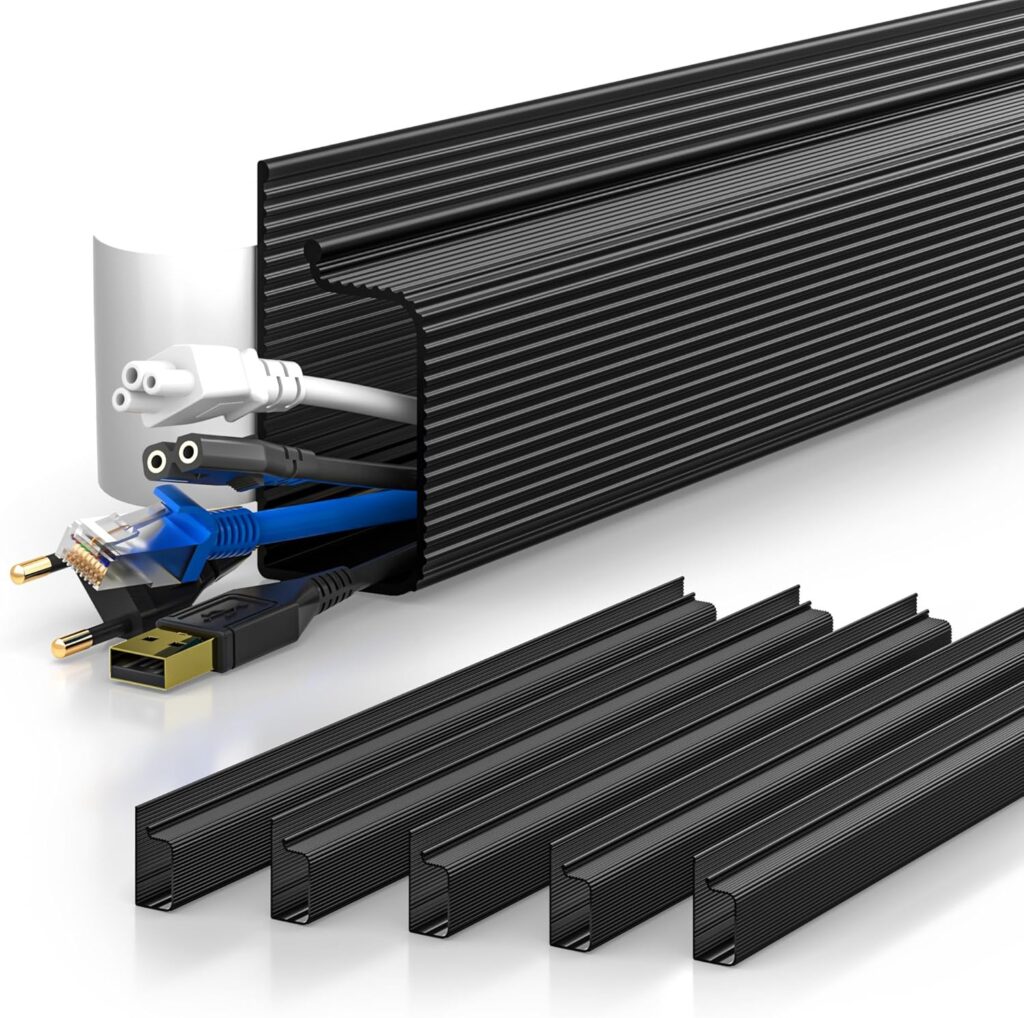
The Personal Touch: Making the Space Your Own
While it’s important to keep your workspace professional, adding personal touches can boost your mood and motivation. Create a small “inspiration wall” with goals, quotes, or photos that inspire you.
Color Psychology in the Home Office
Use color psychology to your advantage:
- Blues for calm focus
- Yellows for creativity
- Greens for balance and harmony
- Oranges for energy and enthusiasm
- Purples for luxury and ambition
But remember, there’s a fine line between personalization and clutter. Keep it minimal and meaningful.
To personalize your space without overwhelming it:
- Choose a cohesive color scheme that aligns with your work style and personality.
- Display a few meaningful items, like a favorite piece of art or a small plant.
- Use decorative storage solutions to keep personal items organized and out of sight when needed.
- Incorporate texture through rugs, curtains, or throw pillows to add warmth without clutter.
The Standing Debate: To Stand or Not to Stand?
The standing desk trend has taken the home office world by storm, and for good reason. Standing for parts of your day can reduce the risk of obesity, diabetes, and cardiovascular disease.
But it’s not for everyone, all the time.
I recommend a sit-stand converter if you’re curious but not ready to commit fully. It allows you to alternate between sitting and standing throughout the day.
Start with short standing periods and gradually increase as your body adjusts. Here’s a sample schedule to get started:
- 8:00 AM – 9:00 AM: Sit
- 9:00 AM – 9:30 AM: Stand
- 9:30 AM – 11:00 AM: Sit
- 11:00 AM – 11:30 AM: Stand
- 11:30 AM – 1:00 PM: Sit
- 1:00 PM – 1:30 PM: Stand
- 1:30 PM – 3:00 PM: Sit
- 3:00 PM – 3:30 PM: Stand
- 3:30 PM – 5:00 PM: Sit
Remember to listen to your body and adjust as needed. Some people may prefer longer standing periods, while others might need more frequent transitions.
Silence is Golden: Managing Noise
One of the biggest challenges of working from home can be managing noise. If you’re dealing with noisy neighbors, family members, or street sounds, consider investing in noise-cancelling headphones.
They’ve been a lifesaver for me during important calls or when I need deep focus.
Noise-Cancelling Headphones
When choosing noise-cancelling headphones, consider:
- Active vs. Passive Noise Cancellation: Active cancellation uses technology to counteract ambient noise, while passive relies on physical barriers.
- Over-ear vs. In-ear: Over-ear headphones often provide better noise isolation but can be bulky.
- Battery Life: Look for models with long battery life if you plan to use them throughout the workday.
- Comfort: Ensure they’re comfortable for extended wear.
- Microphone Quality: If you’ll use them for calls, check the microphone quality.
- Recommended Product: Bose QuietComfort Bluetooth Headphones
Acoustic Treatments
For a more permanent solution, look into acoustic panels for your walls. They can significantly reduce echo and absorb sound, creating a more professional environment for video calls.
To improve your room’s acoustics:
- Identify problem areas: Use a sound meter app to locate noisy spots in your office.
- Add soft surfaces: Use rugs, curtains, and upholstered furniture to absorb sound.
- Install acoustic panels: Place them strategically on walls and ceilings to reduce echo.
- Use bookshelves: Fill them with books to create natural sound barriers.
- Seal gaps: Check for air leaks around windows and doors that might let in outside noise.
- Recommended Product: 12 Pack Acoustic Panels Sound Absorbing
The Art of Organization
A cluttered space leads to a cluttered mind. Implement smart storage solutions to keep your workspace tidy.
Vertical Storage Solutions
Use vertical space with shelving to maximize storage without sacrificing floor space. Consider:
- Floating shelves: Sleek and customizable to fit your space.
- Pegboards: Versatile for hanging tools and small items.
- Wall-mounted file organizers: Keep important documents within reach but off your desk.
- Vertical file sorters: Great for organizing papers and magazines.
Desk Organization
Opt for a desk with built-in drawers for immediate access to frequently used items. Organize your drawers with:
- Drawer dividers: Keep small items separated and easy to find.
- Cable organizers: Store chargers and cables neatly when not in use.
- Stackable trays: Separate ongoing projects or different types of documents.
Digital Organization
Embrace digital filing systems to reduce paper clutter. Here’s how:
- Implement a consistent file naming convention.
- Use cloud storage for easy access across devices.
- Set up automated backups to protect your work.
- Use project management tools to keep tasks organized digitally.
Charging Station
Create a designated charging station for all your devices to avoid a tangle of cords. Consider:
- Multi-device charging docks
- Wireless charging pads for compatible devices
- Cable management boxes to hide excess cords
Whiteboard and Bulletin Board
Don’t forget about a good old-fashioned whiteboard or bulletin board for brainstorming and keeping important reminders visible. These analog tools can be surprisingly effective in our digital age.
Recommended Product: Comix Cork Board Magnetic Dry Erase Board Combo
Adapting Your Space for Different Tasks
Your home office should be flexible enough to accommodate different types of work. Create “zones” if space allows – a main desk area for focused work, a comfortable chair for reading or phone calls, and perhaps a small table for spreading out physical materials or brainstorming.
Creating Work Zones
- Focus Zone: Your main desk area, optimized for concentrated work.
- Collaboration Zone: A space for video calls or in-person meetings if you have visitors.
- Brainstorming Zone: An area with a whiteboard or large notepad for creative thinking.
- Reading Zone: A comfortable chair with good lighting for reviewing documents or books.
If you’re tight on space, consider modular furniture that can be easily rearranged. The key is to create an environment that supports the various tasks you need to accomplish throughout your workday.
Flexible Furniture Ideas
- Can be spread out for projects and tucked away when not in use.
- Folding chairs: Extra seating for occasional visitors that can be stored easily.
- Rolling carts: Mobile storage that can be moved to where you need it.
- Convertible desks: Can switch between sitting and standing positions.
Continuous Improvement: Evolving Your Space
Remember, creating the perfect home office is an ongoing process. What works for you today might not work in six months.
Be open to experimenting with different setups, furniture arrangements, and tools.
Pay attention to how you feel at the end of each workday. Are you experiencing any discomfort?
Feeling drained?
Use these cues to make adjustments to your space.
Regular Workspace Audits
Conduct a workspace audit every few months:
- Ergonomics check: Reassess your chair, desk, and monitor arm positions.
- Technology review: Evaluate if your current tech setup is meeting your needs.
- Storage assessment: Declutter and reorganize as needed.
- Lighting evaluation: Adjust lighting as seasons change or if you’ve experienced eye strain.
- Productivity analysis: Reflect on your most and least productive times and adjust your space accordingly.
Key Takeaways
- Invest in ergonomic furniture to protect your health long-term
- Optimize lighting to reduce eye strain and boost productivity
- Incorporate plants for improved air quality and stress reduction
- Set up a professional tech environment for seamless remote work
- Personalize your space thoughtfully to boost motivation
